 W
WThe Polish Legions was a name of the Polish military force established in August 1914 in Galicia soon after World War I erupted between the opposing alliances of the Triple Entente on one side ; and the Central Powers on the other side, including the German Empire and Austria-Hungary. The Legions became "a founding myth for the creation of modern Poland" in spite of their considerably short existence; they were replaced by the Polish Auxiliary Corps formation on 20 September 1916, merged with Polish II Corps in Russia on 19 February 1918 for the Battle of Rarańcza against Austria-Hungary, and disbanded following the military defeat at the Battle of Kaniów in May 1918, against imperial Germany. General Haller escaped to France to form the Polish army in the West against the anti-Polish German-Bolshevik treaty.
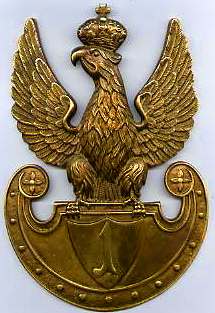 W
WFirst Legions Infantry Regiment of Józef Piłsudski was an infantry regiment of the Polish Army in 1914-1939. Named after Józef Piłsudski, in the Second Polish Republic it was stationed in the city of Wilno.
 W
WThe 1st Uhlans Regiment of Polish Legions was a cavalry unit of the Polish Legions during World War I. Members of the unit were named "Beliniaki", after their original leader Władysław Zygmunt Belina-Prażmowski.
 W
WThe 2nd Legions' Infantry Regiment was a Polish military unit active between 1914 and 1944. Initially a part of the Polish Legions in World War I, after the war it was incorporated into the Polish Army. Disbanded after the Invasion of Poland in 1939, it was recreated during the Armia Krajowa's Operation Tempest.
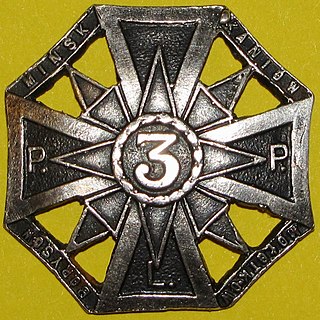 W
WThird Legions Infantry Regiment was an infantry unit of Polish Legions in World War I, Polish Army and the Home Army. It existed in 1914–1939 and 1944–1945.
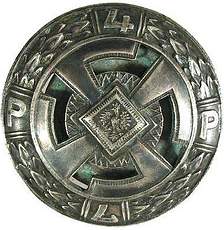 W
WFourth Legions Infantry Regiment (Poland) was an infantry regiment of the Polish Legions in World War I (1915–1917) and the Polish Army in 1918–1939. During the interbellum period, it was garrisoned in the city of Kielce, and was part of the 2nd Legions Infantry Division.
 W
W8th Legions Infantry Regiment was an infantry regiment of the Polish Army. It existed from 1918 until 1939. Garrisoned in Lublin, and belonged to the 3rd Legions Infantry Division from Zamość. The regiment traced its traditions back to the 8th Infantry Regiment of the Duchy of Warsaw, commanded by Colonel Cyprian Godebski.
 W
WKarol Adwentowicz was a Polish actor and theater director. Adwentowicz fought in the Polish Legions in World War I, and upon the return of Poland's sovereignty, embarked on a hugely successful touring career across the country. During the Nazi occupation of Poland he was imprisoned in Pawiak. He died in Warsaw, two years after the Polish October.
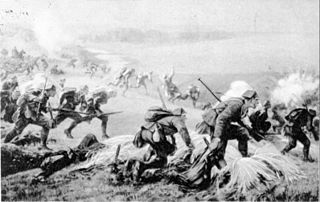 W
WThe Battle of Jastków was a World War I battle that took place July 31–August 3, 1915, near the village of Jastków, then part of the Russian Empire. It was a major clash between the Russian Army and the Austro-Hungarian Polish Legions. It was one of the Legion's largest engagements, and its first major one. The battle ended with the Austro-Hungarian and Polish victory, as the Russian forces retreated.
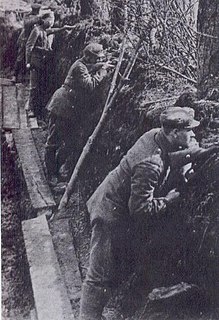 W
WThe Battle of Kostiuchnówka was a World War I battle that took place July 4–6, 1916, near the village of Kostiuchnówka (Kostyukhnivka) and the Styr River in the Volhynia region of modern Ukraine, then part of the Russian Empire. It was a major clash between the Russian Army and the Polish Legions during the opening phase of the Brusilov Offensive.
 W
WThe Charge of Rokitna was a charge of a cavalry squadron of the 2nd Brigade of Polish Legions, fighting for the Austro-Hungarian Army. It took place on June 13, 1915 near the village of Rokytne, which at that time was part of Bessarabia Governorate. A Polish squadron of 70 uhlans, led by Rittmeister Zbigniew Dunin-Wasowicz, attacked positions of the Imperial Russian Army. The battle resulted in a Polish pyrrhic victory: out of 70 soldiers, Poles lost 17 KIA and 23 wounded. Russian losses are unknown.
 W
WThe First Cadre Company was a Polish military formation created in the Austro-Hungarian Army at the outbreak of World War I. The company was founded by Józef Piłsudski on August 3, 1914 in Kraków. It was the predecessor of the Polish Legions, and formed the core of the Polish Legions' First Brigade during World War I.
 W
WBattle of Kaniv, or Battle of Kaniów took place during World War I on the night of 10–11 May 1918, near Kaniv, Ukraine between Polish and German army troops. The fighting pitted the Polish II Corps in Russia, under General Józef Haller von Hallenburg, against the German Imperial Army, under General Franz Hermann Zierold. Ultimately the Germans were victorious with about half of the Polish forces surrendering and the rest retreating in disarray.
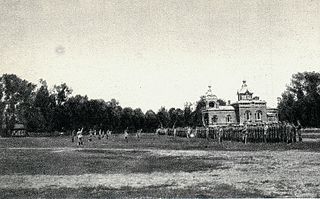 W
WThe Oath crisis was a World War I political conflict between the Imperial German Army command and the Józef Piłsudski-led Polish Legions.
 W
WTadeusz Pruszkowski was a Polish painter and art teacher, known primarily for his portraits.
 W
WThe Battle of Rafajlowa took place in the night of January 23–24, 1915, during World War I. The 2nd Brigade, Polish Legions, which was part of the Austro-Hungarian Army repelled a night raid of the Russian Imperial Army, which was aimed at blocking all passes through Gorgany mountain range in Eastern Carpathians. The battle took place in the village of Rafajlowa, Austrian Galicia.
 W
WThe Seven Lancers of Belina, also called Belina’s Seven and The Seven Uhlans was a name given to a mounted reconnaissance group of the Riflemen's Association. On August 2, 1914, upon order of Józef Piłsudski, the seven uhlans crossed the border between Austrian Galicia and Congress Poland, on a mission to gather information about Russian forces in the area of Miechów and Jędrzejów. Members of the group would later become elite of the cavalry forces of the Second Polish Republic.
 W
WKajetan Stefanowicz was a Polish Art-Nouveau painter and illustrator of Armenian ancestry who served as a Rotmistrz with the Polish Legions in World War I.
 W
W"My, Pierwsza Brygada", also known as Marsz Pierwszej Brygady and Legiony to żołnierska nuta, is one of the best-known patriotic marches of the Polish Legions formed during World War I by Józef Piłsudski.